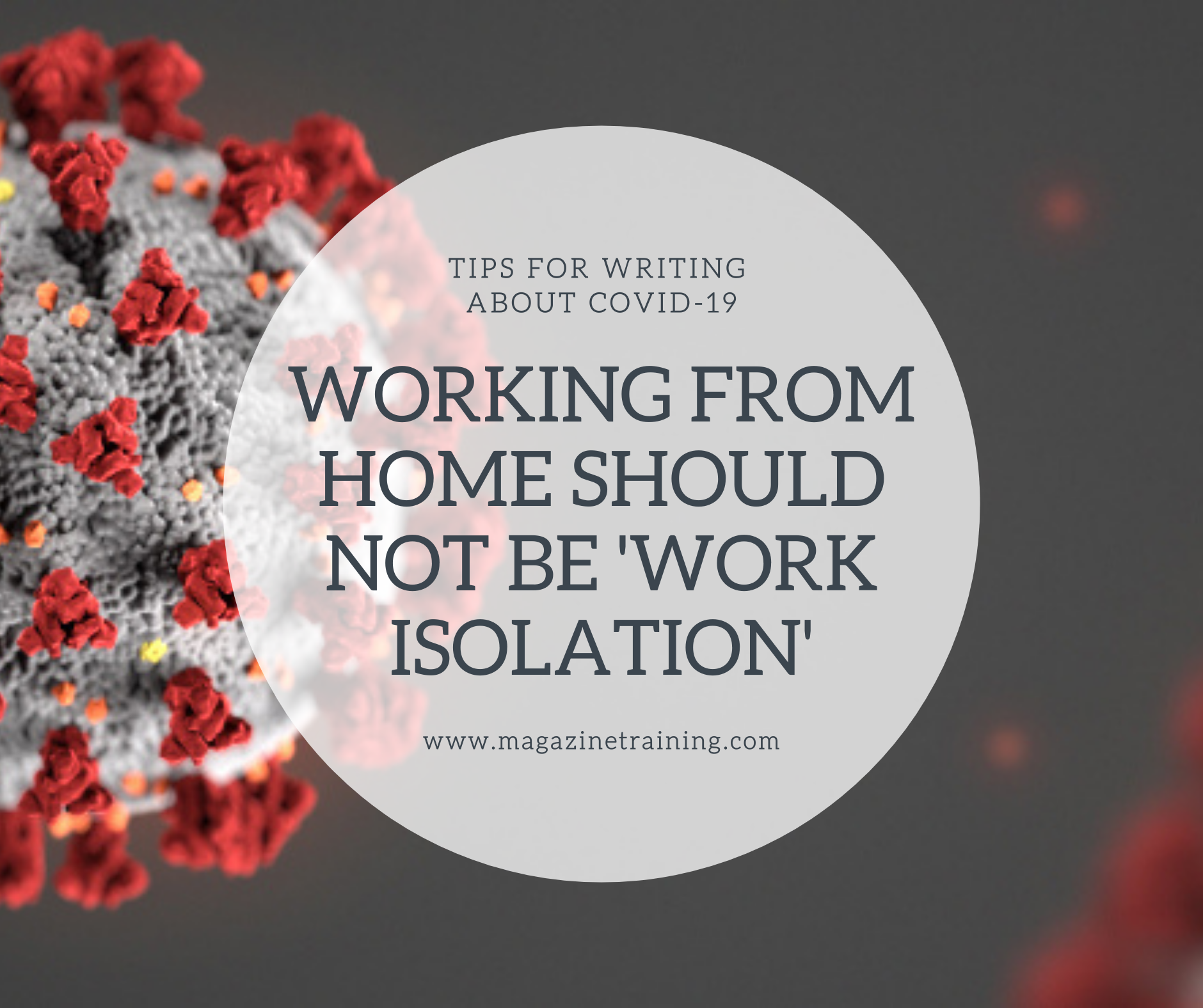
While this crisis too shall end, the idea of “work from home” may be here for some time to come. Beyond the technical challenges, there are also some very real emotional challenges for those banished to working where they live, for their leaders and for the newsroom itself.
Here are some tips and ideas for maintaining your health (mental, physical and emotional) while sitting at your dining room table (more on that in a second). And what newsroom leaders can do to support their team.
As someone working at home now for the last 6 years, I’ve learned a couple things about being productive and keeping it all together personally:
Keep your routine. The old joke about sitting at the computer in the living room in your pajamas may be funny but it is not productive. (Trust me.) You need structure to work smart. Your brain and body need a routine that says “time to get to work.”
Start by getting up at a regular time every workday. (Yes, you can backtime what would normally be your commute into some extra sleep.) Take a shower, get dressed for work (everyday can be casual Friday, though). Make this a routine. Then go to your “workplace.”
Find a relatively permanent place to put your “desk.” A place to work — only for work — don’t play games there, don’t talk to your friends there. Just work there. Do it every day, all the time — your brain will appreciate the routine.
Social distancing does not mean social isolation. You must get up from your desk, your chair (sitting is the new smoking, you know) and get away from the computer in order to let your body and brain reset. Take a walk, play with your pet, eat lunch on the patio, get away and refresh. Set a time each day to do this and set a time to get back to work.
Take a few moments, every day, for yourself. If you are lucky enough to have a family — a partner, kids, pets (do roommates count?) — living with you, they are probably home too. Obviously, this can be an enormous distraction. It’s a blessing too. How often do journalists get to have family meals together? How often do you get to talk to your kids during the day? How much attention does your pet normally get during your workday? (Talk about living in isolation.) Take this time to laugh and love those you are stuck inside with. When it’s over, you’ll miss it.
Leaders, now is the time your team needs you more than ever.
Model your expectations. Leaders know they need to walk their talk. That applies to your emotional health as well as your work. If you say “do something for yourself today” while you sleep on a cot in your office, your credibility will be called into question. You need to practice what you preach — take a walk, eat, go home and unplug. If you follow your own advice, you will be a better boss.
Manage your people as well as their job: Remember, science tells us that 20% of people living in structural isolation will develop emotional loneliness. If you are working at home, or managing people who are, be aware of this. It can be lonely, especially if you are used to being in a newsroom full of type A people all day.
Gallup released a study on this issue last year. No surprise, the cure for loneliness is connection. For a stay-at-home journalist, that equals conversation. One news director I spoke with starts her virtual editorial meetings by asking everyone “What have you done for yourself today?” That short conversation models the importance of taking time to unwind.
Positive feedback is more important now than it’s ever been. People working at home, alone, don’t get any feedback, from anyone. Managers must make sure that isolated staff regularly hear about the value they are providing to the newsroom. Good work must be celebrated.
by Kevin Benz, RTDNA
Related posts
Category: Uncategorized
Malnutrition is a health crisis affecting millions around the world — and one becoming more urgent as the pandemic continues. Its impact is not just represented in […]
Magazine Training International’s mission is to encourage, strengthen, and provide training and resources to Christian magazine publishers as they seek to build the church and reach their societies for Christ.

